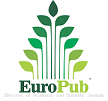Posicionalidade das Artistas Visuais em Gana
Visualizações: 714DOI:
https://doi.org/10.20336/rbs.1006Palavras-chave:
gênero, posicionalidade, artistas visuais femininas, indústria criativa, ÁfricaResumo
A posicionalidade é crucial para indicar a participação, representação e acesso à carreira, especialmente na indústria criativa. Essa indústria, contudo, é marcada por desigualdade e discriminação, que são intensificadas pela informalidade e precariedade prevalentes na indústria. Este artigo contribui para a discussão sobre discriminação de gênero no setor criativo, destacando o contexto único de Gana. Ele discute a posicionalidade interseccional de (que marginaliza) mulheres artistas visuais no âmbito da crescente indústria de arte visual. Com base nos três princípios da posicionalidade de Kezar e Lester, este artigo analisa a influência da intersecção entre sub-representação de gênero e estereótipo geopolítico associado a expectativas socioculturais desfavoráveis no posicionamento desvantajoso de mulheres artistas visuais na indústria. O estudo compreende pesquisa qualitativa com mulheres artistas visuais em Gana, mostrando que a representação minoritária de mulheres obscurece sua identidade profissional e reconhecimento. Essa sub-representação também permite relações de poder desiguais favorecendo artistas masculinos na entrada na indústria, prática e crescimento na carreira. Contextualmente, as mulheres artistas visuais enfrentam posicionamento duplamente subordinado, como mulheres e como artistas não ocidentais baseadas no Sul Global, ao colaborar com artistas ocidentais. Essa subordinação racial intensifica-se ainda mais pelas lutas das artistas por encontrar um equilíbrio entre as demandas de suas carreiras e as expectativas socioculturais associadas ao seu gênero.
Downloads
Referências
Acheampong, Enoch, Anomah, Esenam J., Edusei, Anthony K., Nakoja, Charity, & Afful, Barbara F. (2018). Expectations of and challenges in marriage among the people with disability in the Yendi municipality of Ghana. Developing Country Studies, 8(9), 19-22.
Acquah, Ebenezer K. (2018). Ghanaian artists’ response to preserving Ghanaian cultural values: Ablade Glover and El Anatsui in perspective, International Journal of Innovation and Research, 7(7),163-173. https://doi.org/10.24940/ijird/2018/v7/i7/JAN18013
Adom, Dickson., Daitey, Samuel T., Yarney, Lily, & Fening, Peggy A. (2020). Breaking the culture-specific silence of women glass bead makers in Ghana: towards empowerment. Safety and Health at Work. 11 (4), 450-457. https://doi.org/10.1016/j.shaw.2020.08.002 DOI: https://doi.org/10.1016/j.shaw.2020.08.002
Alacovska, Anna, Langevang, Thilde, & Steedman, Robin. (2021). The work of hope: spiritualizing, hustling and waiting in the creative industries in Ghana. Economy and Space, 53(4), 619-637. https://doi.org/10.1177/0308518X20962810 DOI: https://doi.org/10.1177/0308518X20962810
Alcoff, Linda. (1988). Cultural feminism versus post-structuralism: the identity crisis in feminist theory. Signs, 13(3), 405-36. https://doi.org/10.1086/494426 DOI: https://doi.org/10.1086/494426
Alidou, Ousseina D. (2013). Muslim women in postcolonial Kenya: Leadership, representation, and social change. The University of Wisconsin Press.
Asante, Eric A. (2009). A Study of selected indigenous Ghanaian women in some indigenous visual arts. PhD Thesis presented to the Department of General Art Studies, Kwame Nkrumah University of Science and Technology. https://ir.knust.edu.gh/handle/123456789/708
Babb, Jake. (2019). Impact of practical education network on students and teachers in the Ghanaian junior high school classroom. Open Access Master's Report, Michigan Technological University https://digitalcommons.mtu.edu/etdr/775
Been, Wike, Wijngaarden, Yosha, & Loots, Ellen. (2023). Welcome to the inner circle? earnings and inequality in the creative industries. Cultural Trends, 33(3), 255-272. https://doi.org/10.1080/09548963.2023.2181057 DOI: https://doi.org/10.1080/09548963.2023.2181057
Benjamin, Elliot (2018). The Creative artists’ support group: A therapeutic environment to promote creativity and mental health through person-centered facilitation. Person-centered and Experiential Psychotherapies, 17(2), 111—131. https://doi.org/10.1080/14779757.2018.1440624 DOI: https://doi.org/10.1080/14779757.2018.1440624
Boafo, Kwame, & Simbao, Ruth. (2021). A Quiet revolution in the arts education: The rise of the BlaxTARLINES Kumasi. African Arts, 54(2), 1-5. https://doi.org/10.1162/afar_a_00575 DOI: https://doi.org/10.1162/afar_a_00575
Bobie, Adwoa. O., Darkwah, Akosua K., & Gough, Katherine V. (2023). Career geographies in the Ghanaian fashion industry: From brain drain to brain gain and brain circulation. Globalisation, Societies and Education, (1), 1-14. https://doi.org/10.1080/14767724.2023.2236563 DOI: https://doi.org/10.1080/14767724.2023.2236563
Bodjawah, Edwin, Kissiedu, Kwaku B., Ampratwum, George, Ohene-Ayeh, Kwasi, Amenuke, Dorothy, Mahama, Ibrahim, Kisser, Adjo, McTernan, Billie, Akoi-Jackson, Bernard, Owusu-Ankomah, Kezia, Kujie, SerlormRiskin, Robin, & Thompson, Tracy N. K. (2021). Transforming art from commodity to gift: Kąrî’kạchä Seid’ou’s silent revolution in the Kumasi College Of Art. African Arts, 54(2), 22-35. https://doi.org/10.1162/afar_a_00581 DOI: https://doi.org/10.1162/afar_a_00581
Brooks, Abigail. (2007). Feminist standpoint epistemology: Building knowledge and empowerment through women’s lived experience. In Sharlene Hesse-Biber & Patricia L. Leavy. Feminist research practice: A primer, (pp. 53-82). Sage https://doi.org/10.4135/9781412984270.n3 DOI: https://doi.org/10.4135/9781412984270.n3
Brydges, Taylor, & Hracs, Brian J. (2019). What motivates millennials? How intersectionality shapes the working lives of female entrepreneurs in Canada’s fashion industry. Gender, Place & Culture, 26(4), 510-532. https://doi.org/10.1080/0966369X.2018.1552558 DOI: https://doi.org/10.1080/0966369X.2018.1552558
Carastathis, Anna. (2014). The Concept of intersectionality in feminist theory. Philosophy Compass 9(5), 304–314. https://doi.org/10.1111/phc3.12129 DOI: https://doi.org/10.1111/phc3.12129
Carstensen-Egwuom, Inken. (2014). Connecting intersectionality and reflexivity: Methodological approaches to social positionalities. Erdkunde, 68(4), 265-276. DOI: https://doi.org/10.3112/erdkunde.2014.04.03
Cipriani, Nastassja. (2020). Feminist epistemology: standpoint theory. What can feminist standpoint theory say about the physical sciences? Masters Thesis submitted to the Universidad de Valladolid, Spain. http://uvadoc.uva.es/handle/10324/45684
Conor, Bridget, Gill, Rosalind, & Taylor, Stephanie. (2015). Gender and creative labour. The Sociological Review, 63(1),1–22. https://doi.org/10.1111/1467-954X.12237 DOI: https://doi.org/10.1111/1467-954X.12237
Crenshaw, Kimberle. (1991). Mapping the margins: Intersectionality, identity politics and violence against women of colour. Stanford Law Review, 43(6),1241-1299. https://www.jstor.org/stable/1229039 DOI: https://doi.org/10.2307/1229039
De Beukelaer, Christiaan. (2017). Toward an “African” take on the cultural and creative industries? Media, Culture and Society, 39(4), 582-591. https://doi.org/10.1177/0163443716664856 DOI: https://doi.org/10.1177/0163443716664856
Dent, Tamysn. (2016). Feeling devalued: The creative industries, motherhood, gender and class inequality. PhD Thesis submitted to Bournemouth University. https://eprints.bournemouth.ac.uk/29424/1/DENT%2C%20Tamsyn_Ph.D._2017.pdf
Diabour, Kwame K., Navei, Nyamawero, & Marifah, Hillia F. (2021). Visual arts education and national development: An inquiry into the popularity of visual arts programme in senior high schools in Upper West Region of Ghana, International Journal of Humanities Social Sciences and Education (IJHSSE), 8(12), 42-55. https://doi.org/10.20431/2349-0381.0812005 DOI: https://doi.org/10.20431/2349-0381.0812005
Ekine, Sokari, & Abbas, Hakima. (2013). Queer African reader. Pambazuka Press.
Finkel, Rebecca, Jones, Deborah, Sang, Katherine, & Russell, Deimtrinka S. (2017). Diversifying the creative: Creative work, creative industries, creative identities. Organization, 24(3), 281–288. https://doi.org/10.1177/1350508417690167 DOI: https://doi.org/10.1177/1350508417690167
Gill, Rosalind. (2002). Cool, creative and egalitarian? Exploring gender in project-based new media work in Europe. Information, Communication and Society, 5(1):70-89. https://doi.org/10.1080/13691180110117668 DOI: https://doi.org/10.1080/13691180110117668
Gill, Rosalind. (2014). Unspeakable inequalities: Post feminism, entrepreneurial subjectivity and the repudiation of sexism among cultural workers. Social Politics, 21(4), 509-528. https://doi.org/10.1093/sp/jxu016 DOI: https://doi.org/10.1093/sp/jxu016
Graham, Charles K. (1971). The History of education in Ghana. From the earliest times to the Declaration of Independence. Routledge.
Holmes, Andrew G. D. (2020). Researcher positionality: a consideration of its influence and place in qualitative research. A new researcher guide. Shanlax International Journal of Education, 8(4),1-10. https://doi.org/10.34293/education.v8i4.3232 DOI: https://doi.org/10.34293/education.v8i4.3232
Jansson, Maria, & Calderon-Sandoval, Orianna (2022). Opposition to gender quotas in Sweden and Spain: Debates about gender equality in the film industry. Women's Studies International Forum, 93 (102559). https://doi.org/10.1016/j.wsif.2022.102599 DOI: https://doi.org/10.1016/j.wsif.2022.102599
Kassah, Johnson K., & Kemevor, Agbeyewornu K. (2016). The Challenges of visual arts education in Ghana’s colleges of education. International Journal of Scientific Engineering and Applied Science (IJSEAS), 2(3), 87-98.
Kezar, Adrianna, & Lester, Jaime (2010). Breaking the barriers of essentialism in leadership research: Positionality as a promising approach. Feminist Formations, 22(1),163-185. https://doi.org/10.1353/nwsa.0.0121 DOI: https://doi.org/10.1353/nwsa.0.0121
Knight, Wanda B., & Yang, Deng (2016). N/either here n/or there: Culture, location, positionality, and art education. Visual Arts Research, 42(2),105-111. https://doi.org/10.5406/visuartsrese.42.2.0105 DOI: https://doi.org/10.5406/visuartsrese.42.2.0105
Langevang, Thilde. (2017). Fashioning the future: Entrepreneuring in Africa’s emerging fashion industry. The European Journal of Development Research, 29, 893–910. https://doi.org/10.1057/s41287-016-0066-z DOI: https://doi.org/10.1057/s41287-016-0066-z
Langevang, Thilde, & Gough, Katherine V. (2012). Diverging pathways: Young female employment and entrepreneurship in Sub-Saharan Africa. The Geographical Journal, 178 (3), 242-252. https://doi.org/10.1111/j.1475-4959.2011.00457.x DOI: https://doi.org/10.1111/j.1475-4959.2011.00457.x
Langevang, Thilde, Resario, Rashida, Alacovska, Anna, Steedman, Robin, Amenuke, Dorothy A., Adjei, Sela K., & Kilu, Rufai H. (2022). Care in creative work: Exploring the ethics and aesthetics of care through arts-based methods. Cultural Trends, 31(5): 448-469. https://doi.org/10.1080/09548963.2021.2016351 DOI: https://doi.org/10.1080/09548963.2021.2016351
Langevang, Thilde, Steedman, Robin, Alacovska, Anna, Resario, Rashida, Kilu, Rufai H. and Sanda, Mohammed. (2022). ‘The Show must go on!’: Hustling through the compounded precarity of Covid-19 in the creative industries. Geoforum, 136, 142-152. https://doi.org/10.1016/j.geoforum.2022.09.015 DOI: https://doi.org/10.1016/j.geoforum.2022.09.015
Mohammed, Wunpini F. (2023). Intersectionality in African digital organizing: a Ghanaian perspective. Communication, Culture and Critique. 16(2), 107-109. https://doi.org/10.1093/ccc/tcad007 DOI: https://doi.org/10.1093/ccc/tcad007
Mohammed, Wunpini F. (2022). Why we need intersectionality in Ghanaian feminist politics and discourses. Feminist Media Studies, 23(6), 3031-3047. https://doi.org/10.1080/14680777.2022.2098798 DOI: https://doi.org/10.1080/14680777.2022.2098798
Nzegwu, Nkiru (2019). African art in deep time: De-race-ing aesthetics and de-racializing visual art. The Journal of Aesthetics and Art Criticism, 77(4), 367-378. https://doi.org/10.1111/jaac.12674 DOI: https://doi.org/10.1111/jaac.12674
O’Brien, Dave, Laurison, Daniel, Miles, Andrew, & Friedman, Sam. (2016) Are the creative industries meritocratic? An analysis of the 2014 British Labour Force Survey. Cultural Trends, 25(2), 116-131. http://dx.doi.org/10.1080/09548963.2016.1170943 DOI: https://doi.org/10.1080/09548963.2016.1170943
Ogundipe, Leslie O. (1987). African women, culture and another development. Présence Africaine, (141), 123-139. https://doi.org/10.3917/presa.141.0123 DOI: https://doi.org/10.3917/presa.141.0123
Richards, Christopher. (2022). Cosmopolitanism and women fashion in Ghana. Routledge. DOI: https://doi.org/10.4324/9781003148340
Resario, Rashida, Steedman, Robin, & Langevang, Thilde. (2023). Exploring everyday resilience in the creative industries through devised theatre: A case of performing arts students and recent graduates in Ghana. International Journal of Cultural Studies, 26(3), 237-256. https://doi.org/10.1177/13678779231163606 DOI: https://doi.org/10.1177/13678779231163606
Rowe, Wendy E. (2014). Positionality. In David Coghlan & Mary Brydon-Miller (eds.) The Sage Encyclopedia of Action Research (Vol. 2, p. 628). Sage. https://doi.org/10.4135/9781446294406.n277 DOI: https://doi.org/10.4135/9781446294406.n277
Siaw, Abena O., & Nortey, Samuel. (2011). Teaching and learning of visual arts in senior high schools in Ghana. Journal of Education and Practice, 2(4), 111-120.
Schmahmann, Brenda (2015). Shades of discrimination: The emergence of feminist art in apartheid South Africa. Woman's Art Journal, 36(1), 27-36. https://www.jstor.org/stable/26430740
Seid’ou, Kąrî'Kạchä. (2020a). Changing lessons: The Kumasi School of “Art and Crafts” in a Scottish regime (1952-1962). Asian Research Journal of Arts & Social Sciences, 11(1), 42-71. https://doi.org/10.9734/arjass/2020/v11i130161 DOI: https://doi.org/10.9734/arjass/2020/v11i130161
Seid’ou, Kąrî'Kạchä. (2020b). “Hand and Eye Work” in Gold Coast colonial modernism: A genealogical history of Ghana’s fossilized art curriculum. In Vlasta Hus (ed.). New Horizons in Education and Social Studies (Vol. 2, pp. 136-161). Book Publisher International. https://doi.org/10.9734/bpi/nhess/v2 DOI: https://doi.org/10.9734/bpi/nhess/v2
Sica, Alan (ed). (2005). Social thought: From enlightenment to the present. Pearson.
Stalp, Marybeth. (2017). Still a man’s art world: The gendered experiences of women artists. Journal of Research on Women and Gender, 6(2), 40-55. https://hdl.handle.net/10877/12876
Steedman, Robin, Alacovska, Ana, Langevang, Thilde, and Resario, Rashida. (2022). Imaginaries of platform entrepreneurship in the creative industries: Techno-optimism and subversion in Ghanaian filmmaking, Information, Communication and Society, 26(10), 1979-1995. https://doi.org/10.1080/1369118X.2022.2062252 DOI: https://doi.org/10.1080/1369118X.2022.2062252
Takacs, David (2002). Positionality, epistemology, and social justice in the classroom, Social Justice, 29(4),168-181. https://www.jstor.org/stable/29768156
Tamale, Sylvia. (2020). Decolonization and Afro-feminism. Daraja Press.
Venner, Catherine. (2015). Positionality at the center: Constructing an epistemological and methodological approach for a western feminist doctoral candidate conducting research in the postcolonial, International Journal of Qualitative Methods, 14(4). https://doi.org/10.1177/1609406915618094 DOI: https://doi.org/10.1177/1609406915618094
Visonà, Monica B. (2015). Chika Okeke-Agulu, postcolonial modernism: Decolonisation in twentieth-century Nigeria. The Art Bulletin, 98(2), 272-274. https://doi.org/10.1080/00043079.2016.1155906 DOI: https://doi.org/10.1080/00043079.2016.1155906
Zeleza, Paul T. (2006). The inventions of African identities and languages: The discursive and developmental implications. In O. F. Arasanyin & M.A. Pemberton. Selected Proceedings of the 36th Annual Conference on African Linguistics (pp. 14-26). Cascadikka Proceedings Project.
Downloads
- pdf (English) 221
Publicado
Como Citar
Edição
Seção
Licença
Copyright (c) 2025 Adwoa Owusuaa Bobie

Este trabalho está licenciado sob uma licença Creative Commons Attribution 4.0 International License.
Autores que publicam nesta revista concordam com os seguintes termos:
- Autores mantêm os direitos autorais e concedem à revista o direito de primeira publicação, com o trabalho simultaneamente licenciado sob a Licença Creative Commons Attribution que permite o compartilhamento do trabalho com reconhecimento da autoria e publicação inicial nesta revista.
- Autores têm autorização para assumir contratos adicionais separadamente, para distribuição não-exclusiva da versão do trabalho publicada nesta revista (ex.: publicar em repositório institucional ou como capítulo de livro), com reconhecimento de autoria e publicação inicial nesta revista.
- Autores têm permissão e são estimulados a publicar e distribuir seu trabalho online (ex.: em repositórios institucionais ou na sua página pessoal) a qualquer ponto antes ou durante o processo editorial, já que isso pode gerar alterações produtivas, bem como aumentar o impacto e a citação do trabalho publicado (Veja O Efeito do Acesso Livre).















